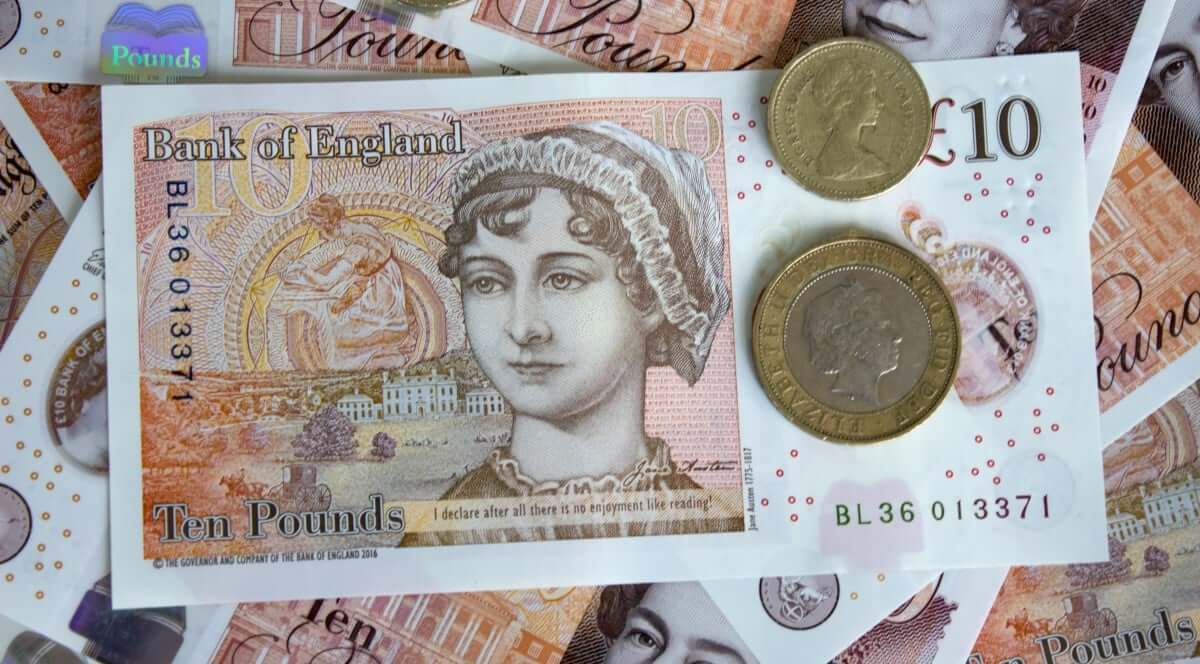
U.S. dollar fell on Tuesday while Euro and Sterling rallied
The Euro soared against the greenback today, along with the British Pound. New data showed that the eurozone employment rate increased more than analysts expected. At the same time, U.K. basic pay growth soared. These reports highlight the labor market’s resilience across the region.
Even though economic growth is slowing in the eurozone, the number of people with jobs rose by 0.4% quarter-on-quarter. Moreover, in the United Kingdom, the pace of growth in basic pay accelerated again in the last quarter of 2022. The cooling labor market hadn’t affected it as much as economists feared. The Bank of England (BoE) tracks the pace of pay growth in the country. BoE usually gauges how much higher to hike interest rates based on this data, among others.
On Tuesday, the common currency surged forward by 0.3% versus the USD, trading at $1.0756 at last. However, the Euro has plummeted by 2.56% since hitting a ten-month peak of $1.1034 on February 2. Meanwhile, the British Pound jumped by 0.4% to $1.2192 today after briefly skyrocketing to an 11-day high against the dollar.
Stuart Cole, the head macroeconomist at Equiti Capital, noted that the Bank of England has already hinted numerous times that a tight labor market threatens price stability. Thus, Tuesday’s figures will only strengthen traders’ expectations that the bank will increase interest rates further at March’s MPC meeting.
Currently, investors are pricing in an 80% chance of the BoE increasing rates by a quarter-point percentage in the coming months. There is also a 74% chance that the European Central Bank will deliver a 50-basis point interest rate rise by March.
How is the USD trading now?
The dollar index declined by 0.18% to 103.03 against the basket of six major currencies today. Traders are waiting for an inflation report that will likely influence the greenback’s course. The Federal Reserve will likely decide its policy based on U.S. consumer inflation data. The analysts expect the headline number to have soared by an annual 6.2% last month.
Market participants argue whether inflation will remain at 3% – 4% or lower to 2% – noted Moh Siong Sim, the currency strategist at the Bank of Singapore. He also added that the odds are shifting that inflation might get stuck at a 3-4% level. In this case, the Federal Reserve will have to take more measures to bring it down. The agency already hiked rates by 25 bps earlier this month to cool inflation. Moreover, it stated that it was gaining ground in its fight against soaring prices.
Meantime, the Japanese yen surged forward after the government nominated Kazuo Ueda as the Bank of Japan’s next governor. He was an unexpected choice due to his more hawkish inclinations. However, Ueda stated that he agreed with the BOJ’s ultra-easy monetary policy. Despite that, some investors bet that the central bank will start hiking rates after Ueda takes the post.
On Tuesday, the yen climbed up by 0.1%, exchanging hands at 132.27 per US dollar. The Japanese currency plummeted to a 32-year low of 151.94 per USD last year. It suffered great losses as Japanese rates remained near zero and U.S. rates soared. However, the yen managed to regain some of those losses recently.
What about the EM currencies?
Emerging market currencies also traded in the green on Tuesday against the weakened greenback. But Hungary’s forint dropped after new data showed the country’s economy moved into recession during the last quarter.
Overall, the MSCI index for EM currencies added 0.2% today, even though the forint declined against the Euro in central and eastern Europe. According to the report, the Hungarian economy contracted by 0.4% quarter-on-quarter. Piotr Matys, the senior FX analyst at In Touch Capital Markets, noted that the country is officially in a recession. Its economy shrunk for a second straight quarter.
On the other hand, a flash estimate showed that Romania’s economy grew more than analysts expected in Q4. Moreover, a separate survey reported that inflation lowered to 15.07% in January. Despite such news, the leu tumbled down by 0.1% today.
Poland’s zloty also declined by 0.1%. The data showed the country’s gross domestic product jumped by 2.0% year-on-year in the last quarter, but this news didn’t support the currency. On Tuesday, Russia’s rouble also plunged to its lowest level since late April.




